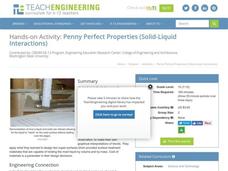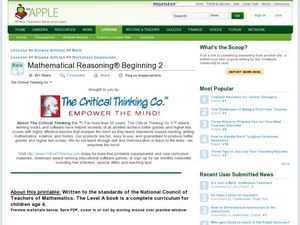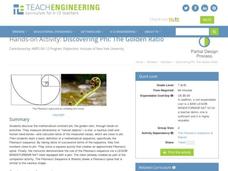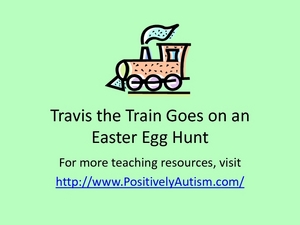Teach Engineering
Insulation Materials Investigation
Don't melt away! Pairs investigate different insulation materials to determine which one is better than the others. Using a low-temp heat plate, the teams insulate an ice cube from the heat source with a variety of substances. They...
Teach Engineering
Earthquakes Living Lab: The Theory of Plate Tectonics
Find out if your class agrees with Ice Age: Continental Drift ... or if it's just a fun family movie! Class members research the theory of continental drift, examine evidence of plate tectonics, connect...
Teach Engineering
Earthquakes Living Lab: FAQs about P Waves, S Waves and More
Let's talk about earthquakes .... Using the Internet, pupils research what causes earthquakes, how scientists measure them, their locations, and their effects. The resource is not only informative, but it also builds crucial...
Teach Engineering
Earthquakes Living Lab: Locating Earthquakes
There are patterns in nearly everything — even earthquakes. Pairs research current earthquakes to see if there are any patterns. They determine the mean, median, and mode of the earthquake data, along with the maximum and...
Teach Engineering
Earthquakes Living Lab: Finding Epicenters and Measuring Magnitudes
Pairs use an online simulation to determine the epicenter and magnitude of an earthquake. Using real data about the earthquake's maximum S wave amplitudes, they then determine the magnitude. The resource provides a great career...
Teach Engineering
Earthquakes Living Lab: Geology and Earthquakes in Japan
Sometimes it seems as if earthquakes hit the same places over and over again. Class members study Japan in order to determine why earthquakes keep happening there. Pairs work together to research and try to determine whether there...
Teach Engineering
Earthquakes Living Lab: Geology and the 1906 San Francisco Earthquake
We can learn from the past to protect the future. Pairs look at two historical earthquakes: San Francisco, Calif., and Kobe, Japan. Pupils compare the two earthquakes and their impacts, then determine how engineers may use the...
Curated OER
Going to the Doctor: Vocabulary Cards
Flash cards are a great tool for kids with autism; use them to build a functional vocabulary. This set of nine flash cards focus in on vocabulary you'd use at the doctor's office. Consider providing sentence frames for your...
Curated OER
Going to the Doctor: Social Story
A trip to the doctor can be a difficult experience for some pupils. Intended for use with Autistic children, this social story prepares them for a visit to the doctor. Each page contains an image and a different facet of what happens at...
Curated OER
Birthday Verbs
Use this vocabulary development resource as flash cards or with an iPad. Autistic or special needs pupils can review birthday related vocabulary words. Each word is a verb and each associated image shows that verb as it is occurring at a...
Curated OER
3 Little Pigs Vocabulary
Prime your Autistic or special education pupil with this image-rich vocabulary preview. To be used with the story, Three Little Pigs, these cards each contain an image and the associated word or phrase that relates to the story.
Curated OER
Animal Sounds: The Three Little Pigs
Intended for use with the story of The Three Little Pigs, this resource offers special-needs individuals an opportunity to boost verbal skills and word recognition. Each page includes both words and vivid images to enhance the learning...
Curated OER
Phonics Train: /at/ words
A well-scaffolded phonics resource awaits you and your autistic learners. Phase one in this multi-page document asks, "What is on the train?" The answer is an /at/ word, such as cat, mat, bat, or hat. In Phase two, the train is shown...
Curated OER
Train Phonics /ug/ words
Ask your Autistic pupils what is riding on the train. When they answer, point out that they made the /ug/ sound in each of the three-letter words they say. This is a well scaffolded resource that works toward reading with...
Teach Engineering
Penny Perfect Properties (Solid-Liquid Interations)
I can get more water to stay on a penny than you can! Collaborative pairs determine the volume of liquids that can be contained on the surface of copper pennies and plastic coins. The pairs analyze their results using graphs and go on to...
Curated OER
Critical Thinking Problems
Young mathematicians practice their reasoning as well as adding and subtracting skills with this worksheet that includes five simple word problems about birthdays. Learners are give pictures of birthday cakes and based on the number of...
Federal Reserve Bank
What Are the ‘Ingredients’ for Economic Growth?
Delve into the concept of economic growth with your class members, including why economic growth is important, what causes it, and how can countries encourage it.
Federal Reserve Bank
The Great Inflation: A Historical Overview and Lessons Learned
Your young economists will explore the roots of fears about high inflation by learning the effects of rising prices during the world wars and in particular the Great Inflation of the 1970s.
Federal Reserve Bank
The Legacy of the Olympics: Economic Burden or Boon?
Do the economic benefits of major sporting events such as the Olympics or the World Cup outweigh the expected costs? Using fundamental economic terms, discover the explicit and implicit costs and benefits for countries that host these...
Curated OER
The Virtuoso Phenomenon
After reading the New York Times article "Virtuosos Becoming a Dime a Dozen," learners answer eight who, what, when, where, and why questions. They post their answers on the New York Times Education Blog. A fun way to get learners...
Curated OER
Winter Syllables pg. 1
It's winter! Bring the winter theme into your classroom with a syllable worksheet. Scholars identify the winter picture, clap the number of syllables in the word, and then write in the matching number of syllables for the word. There are...
Curated OER
Teaching Game Play Concepts
Some children with autism need to be prepped prior to game play, and game play concepts need to be introduced and reinforced. This short yet informative article will help you know how to get the kids in your special ed class ready for...
Teach Engineering
Discovering Phi: The Golden Ratio
Fe, phi, fo, fum. This activity leads pairs to find the ratio of consecutive terms of the Fibonacci sequence. The pairs find that the Fibonacci sequence can be found in many places. A discussion with the class shows that the ratios...
Curated OER
Travis The Train Goes on an Easter Egg Hunt
Many people have Easter Egg Hunts as a way to celebrate spring time. This social story allows your special-needs child to know what to expect before they head out with a basket in hand. You can print this book or show it on the computer,...























